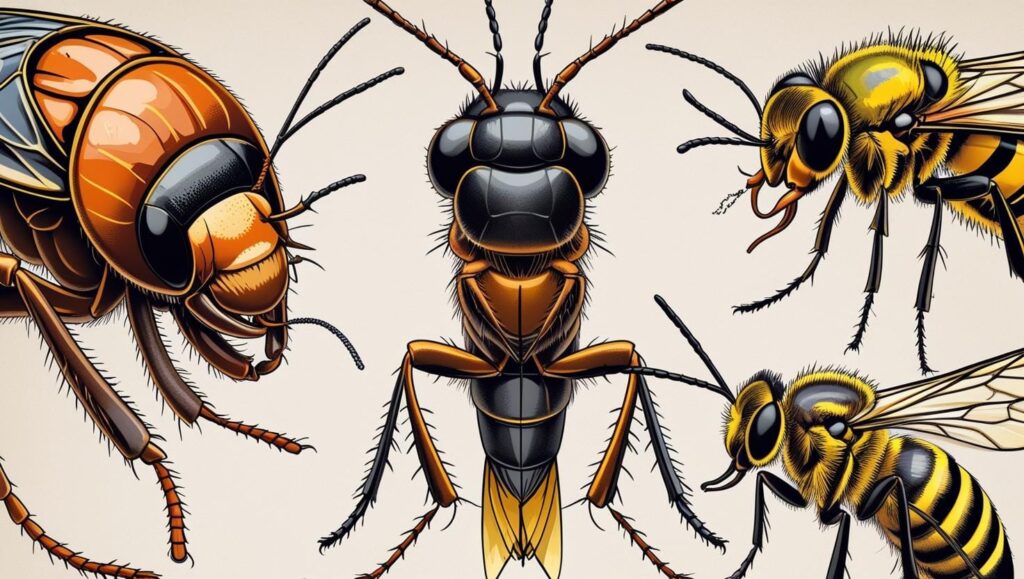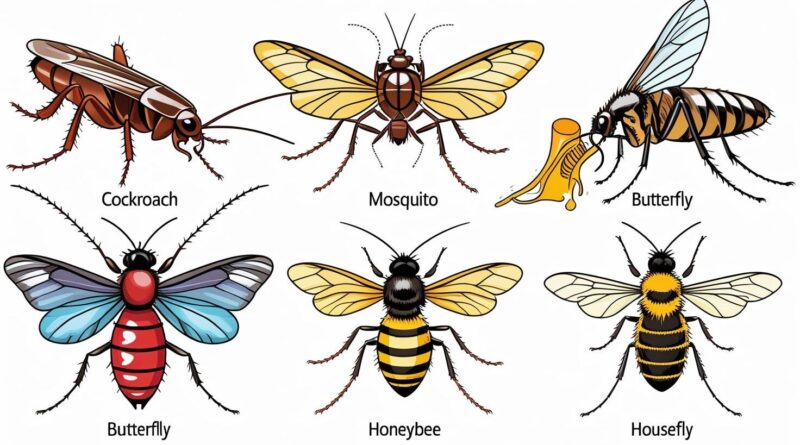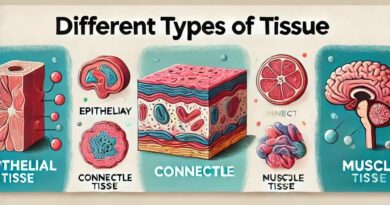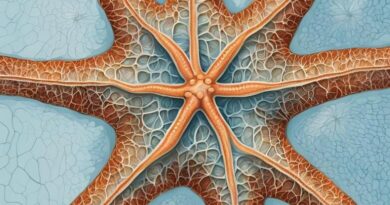To study the mouth parts of the following insects: 1) Cockroach, 2) Mosquito, 3) Butterfly, 4)Honey Bee, 5)House Fly
To study the mouth parts of the following Insects: 1) Cockroach, 2) Mosquito, 3) Butterfly, 4) Honey Bee, 5)Housefly
The mandibles & maxillae, along with the labrum and hypopharynx, form the mouth parts, useful for feeding. The study of mouth parts of insects is important to control insect pests. The following are the main modifications that occur in different insects:-
- Biting and chewing mouth parts (Cockroach)
- Piercing and sucking mouth parts (Mosquito)
- Siphoning mouth parts (Butterfly)
- Chewing and lapping mouth parts (Honey Bee)
- Sponging and lapping mouth parts (Housefly).


1) Biting and chewing mouth parts (Cockroach):
These are the primitive mouth parts and from them all other types of mouth parts have evolved. They are also called mandibulate type of mouth parts and are meant for pinching off, chewing up, and swallowing the pieces of plant and animal tissue. e.g., Cockroaches, Grasshoppers, Crickets, Termites, Beetles, Dragonflies, and Silverfish. These mouth parts consist of the following Parts:
- Labrum: It is a broad flap having a variable Shape and size hanging from the clypeus in front of other mouth parts. It has on its posterior (ventral) side a membranous Swollen area, the epipharynx, which bears taste buds.
- Mandibles: They are a pair of mandibles, which are heavily sclerotized, triangular structures lying just behind the labrum. Each mandible bears teeth like denticles, which interlock while capturing the prey. The mandibles are moved by a pair of abductor and adductor muscles. The mandibles are useful for biting and chewing food.
- Maxillae: The maxillae are paired and situated on the sides of the mouth behind the mandibles. Each maxilla consists of a basal two pieces, a proximal cardo, and a distal Stipes. This portion is called protopodite. The lacinia and galea bear taste buds, so they taste the quality of food. The maxillae are useful for holding the food material.
- Labium or Lower Lip: This is also called the Second Pair of Maxillae, basically fused to form a broad plate divided by a transverse suture into two parts, the basal postmentum and the distal prementum. The labial palp are sensory and help in testing the quality of food as they contain chemoreceptors. The glossae and paraglossae together prevent the loss of food while feeding.
- Hypopharynx: It is a short, median, tongue-like appendage in the mouth cavity between the labium and mandibles. It is neither muscular nor glandular but supported by a few narrow sclerites. The common Salivary duct opens into the base of the Hypopharynx.
2) Piercing and sucking mouth parts (mosquito):- These mouth parts occur in bugs, aphids, Scale insects, mosquitoes, fleas and Some flies. They are used for sucking the Sap or blood by piercing into plant or animal tissue.
- Mouth parts of Mosquito: These mouth parts are used for piercing and sucking the blood from host. The labrum, mandibles, maxillae, and hypopharynx form long, pointed stylets for piercing the host skin. The labrum is grooved ventrally. The hypopharynx encloses the salivary duct. Labial palp serves as a sheath for the stylets at rest but folds up as the stylets Pierce the host tissue at the time of feeding. The mandibles are absent in the male. Maxillary Palps are short and three-jointed.
3) Siphoning mouth parts (Butterfly):- These mouth parts occur in butterflies and moths and these are modified for sucking the fluid nectar from the flowers & fruits. The mandibles and labium are very much reduced. The labrum is merely a narrow transverse band. The maxillary palps are vestigial, but the galeae are very long and deeply grooved medially. When it is not in use, it is coiled like a watch spring under the head. At the time of feeding, the Proboscis remains uncoiled. The labium is reduced to a triangular plate bearing well-developed three-jointed labial palps. There is no Hypopharynx, and the Salivary channels are lacking.
4) Chewing and Lapping mouth parts (Honey Bee):-
These types of mouthparts are found in some Hymenoptera (bees and wasps), particularly in worker bees. They are used for collecting nectar and pollen of flowers and moulding Wax. These mouth parts serve for both biting and licking. The labrum lies beneath the clypeus, and the fleshy epipharynx projects below the labrum. The mandibles are smooth and spatulate. The worker bees use them in building the cells of the hives. The maxillae lack laciniae, have vestigial palps, and bear a long, blade-like galea. The labium has elongated palps, reduced paraglossae, and elongated curved glossae united to form a retractile tongue bearing a honey-spoon or labellum at the distal free end.
While feeding, galeae and labial palps are brought close together, forming a long hollow Proboscis, which can be inserted deeply into the corolla of a flower. Nectar is drawn up into the proboscis by a fourth movement of the tongue.
5)Sponging or Lapping mouth parts (Housefly):-
These mouthparts are common in houseflies, blow flies, and fruit flies. They are modified for the sucking up the liquid food by salivary secretion. The mandibles are absent, while the maxillae are represented only by two maxillary palps, each made up of a single piece. The labium is greatly modified to form so so-called proboscis, which consists of three parts.
i)The proximal Rostrum bearing maxillary palps.
ii)The middle haustellum with a mid-dorsal groove, serving as the food passage, and a Ventral plate-like structure called theca.
iii)The distal labellum (oral disc) or sucker. The labellum has two lobes or labellae on which immersides contain many cylindrical tubes called the Pseudotracheae. They converge into the mouth, which leads into the food channel. The pseudotracheae soak the fluid food, which is then passed on to the food channel from where it is Sucked up by muscular Pharynx. The food channel is formed by the labrum, epipharynx, and Hypopharynx.




